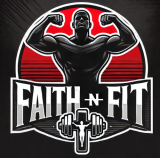Learn how to decode fitness marketing hype and make smarter, more results-driven nutrition decisions—starting today. The V Shred Diet has become one of the most searched fitness terms in recent years. Promoted by Vince Sant, this program claims to help users lose fat, build muscle, and “get shredded fast” using personalized meal and workout plans. But is the V Shred Diet legit—or just another overhyped fitness gimmick?
Let’s break it down using real math, fitness science, and practical experience from the lens of a certified trainer and nutritionist.
What Is the V Shred Diet Supposed to Do?
V Shred’s program promises customized nutrition plans based on your body type (ectomorph, mesomorph, or endomorph), fat-burning supplements, and HIIT workouts. The brand says this combo creates fast fat loss and visible muscle definition.
But here’s the truth: while some of these principles have merit, the math behind weight loss and muscle gain never changes:
- Fat loss = Calorie deficit + satiety + nutrients + NEAT + training
- Muscle gain = Calorie surplus + protein + progressive overload + muscle failure
Your body doesn’t care about the marketing. It cares about energy balance and stimulus adaptation.
Does It Really Customize Based on Body Type?
V Shred leans hard into body type theory (somatotyping) to “customize” your diet. While it’s true some people struggle more with fat loss or muscle gain, somatotypes are mostly outdated in fitness science.
Instead of labeling yourself as an “endomorph,” you should:
- Track your caloric intake
- Monitor your weight weekly
- Adjust based on real results—not pseudoscience
🔍 Tip: Use your BMR (Basal Metabolic Rate) and TDEE (Total Daily Energy Expenditure) to calculate your ideal calorie range. You can find TDEE calculators like this one to help personalize your plan far more accurately than a somatotype guess.
Does the V Shred Diet Help You Lose Fat?
If you follow the plan, you’ll probably lose weight—but not because of V Shred’s magic. It’s because you’re eating fewer calories and moving more.
Here’s how V Shred achieves this:
- Meal frequency: You eat smaller, cleaner meals.
- Supplements: Most are caffeine-based, which increases thermogenesis.
- Workouts: Intense HIIT programs burn more calories in less time.
So yes, it works, but not any more than a disciplined calorie deficit paired with moderate exercise.
What’s the Catch?
- Upsells and Hidden Costs: The advertised “free quiz” often leads to paid programs, overpriced supplements, and unnecessary upgrades.
- Lack of true personalization: Plans are broadly templated, not uniquely built.
- Overreliance on supplements: Fat loss should come from diet first—not pills.
If you’re disciplined and math-minded, you don’t need a program to tell you that eating 500 fewer calories per day equals about 1 pound of fat loss per week.
Is It Worth It?
Only if you need structure. If you’re a beginner and find yourself stuck, V Shred offers:
- A framework to follow
- Motivation via a community
- Easy-to-follow videos and recipes
But for the educated fitness consumer, it’s a lot of flash with minimal substance.
What Should You Do Instead?
Build your own V Shred—without the hype.
Here’s a smarter 3-step formula:
- Calculate TDEE & aim for a 15-20% deficit
- Eat high-protein, high-volume, nutrient-dense foods (to stay full)
- Add NEAT (walking, chores) and weight training 4x a week
No gimmicks. Just science, numbers, and self-discipline.
Key Takeaway
Don’t confuse marketing for mastery.
V Shred is legit if it gets you to move more and eat less—but it’s not magic. By focusing on the numbers—calories in vs. calories out—and eating in a way that fuels your workouts and satisfies hunger, you can build your own transformation plan today.
Subscribe now and get a 14-day free trial workout app for iPhone users.





